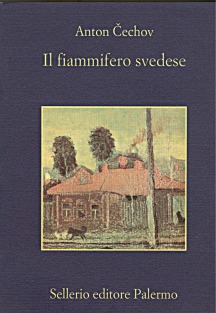The history of the match shows us the necessity of men to have the possibility to switch fire in any situation. The fire can simbolize in this case the Pride (Superbia) of having the property on the fire. The same property of the fire has created in the beginning of the story the Envy (Invidia) in the richest people due to the losing of the exclusivity of the fire.
The original significate of the fire passes through the Anger (Ira) and the Lust (Lussuria) of the hell.
What does history really consists of? Centuries of people quietly going about their daily business - sleeping, eating, having sex, endeavouring to get comfortable. And where did all these normal activities take place? At home. [Bill Bryson - At Home, a short history of private life]
venerdì 28 dicembre 2012
giovedì 27 dicembre 2012
The Smell of a Match
The chemical composition of the match in its history changed radically from material such as phosphorus and potassium chlorate to a more safer materials (arriving to the safety match - or swedish - that uses red phosphorus instead of the white one).
Each chemical composition characterizes the smell of that single match, that change from the state: when it is off many of those have no smell at all or just that of the wooden stick.
The first matches were characterized by a bad smell due to the potassium. Adding phosphorus the smell was no more annoying.
When it burns the match spreads the smell of the sulphur for a short time.
A little curiosity about matches and smells is that they were used to hide unpleasant odors thanks to the sulphur itself.
Each chemical composition characterizes the smell of that single match, that change from the state: when it is off many of those have no smell at all or just that of the wooden stick.
The first matches were characterized by a bad smell due to the potassium. Adding phosphorus the smell was no more annoying.
When it burns the match spreads the smell of the sulphur for a short time.
A little curiosity about matches and smells is that they were used to hide unpleasant odors thanks to the sulphur itself.
sabato 15 dicembre 2012
The words of the Match
The Italian ABC Book:
A per Antivento / Accendere
B per Bastoncino / Berna (città svizzera dove venne raggiunto un accordo per proibire l'uso del fosforo bianco)
C per Cerino / Combustibile / Chimica
D per Durata (caratteristica fondamentale della cosa e delle differenti tipologie)
E per
F per Fosforo / Fuoco / Fumo
G per Grattare
H per Hans Christian Andersen
I per Infiammare / Innesco
L per Legno (componente principale di ogni fiammifero)
M per Minerva
N per Notte
O per Ossido di Piombo (materiale che ha reso sicuro l'uso del fiammifero)
P per Pasch (Gustav Erik), inventore dei fiammiferi di sicurezza, 1844 / Priester (Nota azienda tedesca di fiammiferi)
Q per Quotidiano
R per Riscaldare / Reazione
S per Svedesi / Sicurezza / Sfregamento
T per Tasse / Tabacco
U per Ustione (problema dei primi fiammiferi che erano caratterizzati da violenti inneschi) / Usa&Getta
V per Valobra (Chimico Italiano che inventò per primo il fiammifero a sfregamento)
Z per Zolfanello / Zolfo
A per Antivento / Accendere
B per Bastoncino / Berna (città svizzera dove venne raggiunto un accordo per proibire l'uso del fosforo bianco)
C per Cerino / Combustibile / Chimica
D per Durata (caratteristica fondamentale della cosa e delle differenti tipologie)
E per
F per Fosforo / Fuoco / Fumo
G per Grattare
H per Hans Christian Andersen
I per Infiammare / Innesco
L per Legno (componente principale di ogni fiammifero)
M per Minerva
N per Notte
O per Ossido di Piombo (materiale che ha reso sicuro l'uso del fiammifero)
P per Pasch (Gustav Erik), inventore dei fiammiferi di sicurezza, 1844 / Priester (Nota azienda tedesca di fiammiferi)
Q per Quotidiano
R per Riscaldare / Reazione
S per Svedesi / Sicurezza / Sfregamento
T per Tasse / Tabacco
U per Ustione (problema dei primi fiammiferi che erano caratterizzati da violenti inneschi) / Usa&Getta
V per Valobra (Chimico Italiano che inventò per primo il fiammifero a sfregamento)
Z per Zolfanello / Zolfo
martedì 11 dicembre 2012
A Match in a Book!
Book Cover
 |
| Il Fiammifero Svedese, Anton Cechov |
 |
| Fiammiferi e altri racconti, Salinoch |
 |
| Fiammiferi | Matches Boxes, Matteo Guarnaccia |
| I Fiammiferi | collezionismo curiosità e giochi, Anders Neumuller |
| Il cinema nella scatola di fiammiferi, Vladimir Stojšin |
 |
| Il fiammifero svedese e il segreto dell'amore, Philip Pullman |
 |
| Il gioco dei fiammiferi, Anna Pacifico |
 |
| Il matrimonio dei fiammiferi, Carroll Jonathan |
 | ||
| Io innalzo fiammiferi, Irene E. Leo |
 |
| La bambina che amava troppo i fiammiferi, Gaétan Soucy |
 |
| La nave di fiammiferi, Cinzia Sesti |
Iscriviti a:
Post (Atom)


